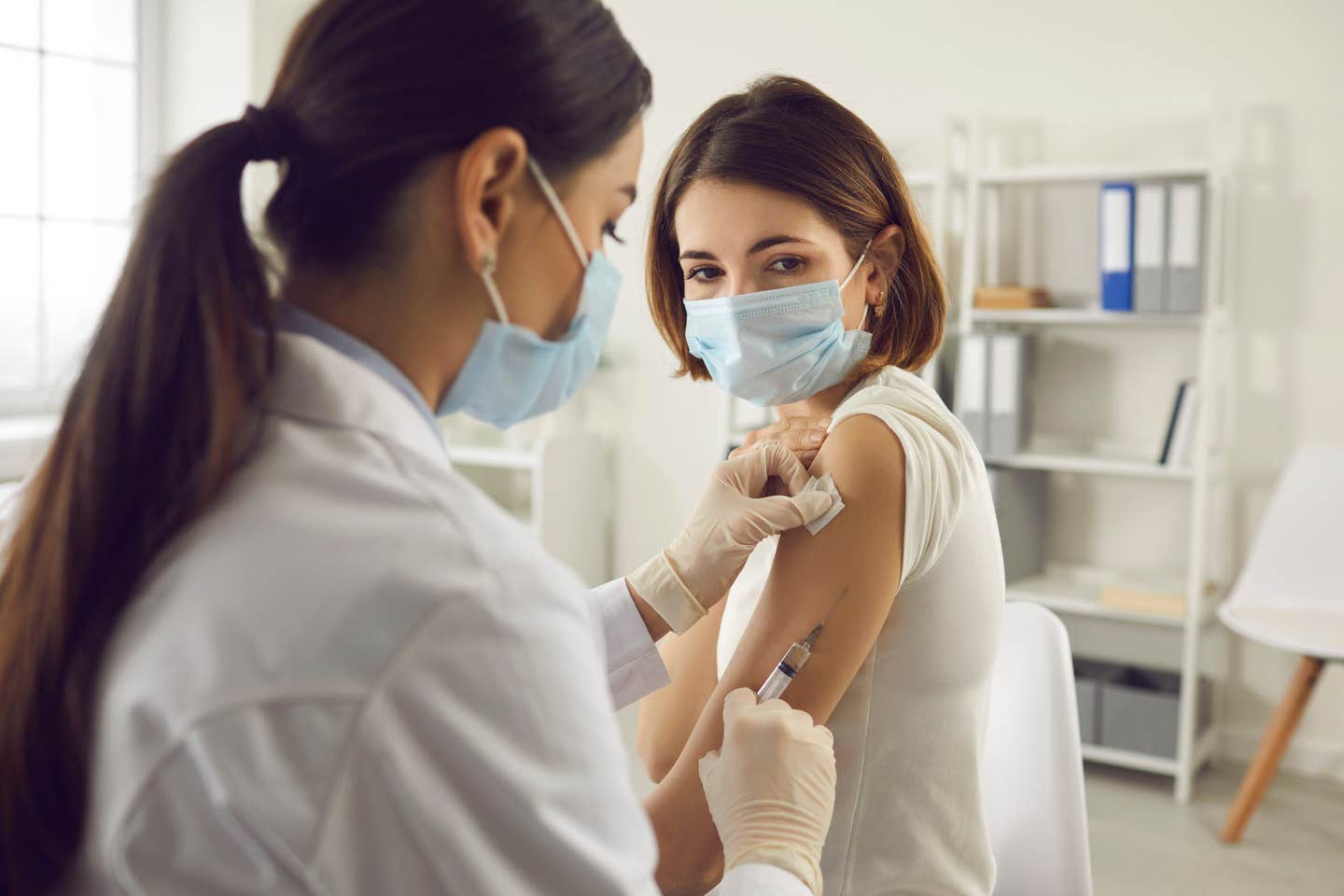Revolutionary antiviral discovery could protect humanity from all future pandemics
Scientists mimic rare immune mutation to create a therapy that blocks nearly all viruses, offering hope for future pandemics.

A rare genetic condition that shields people from nearly every virus has inspired a new therapy that could protect anyone from future pandemics. (CREDIT: Shutterstock)
For a small group of people scattered across the world, living with a rare immune condition comes with an unexpected twist: they appear to be naturally shielded from almost every virus known to infect humans. The discovery, made by Columbia University immunologist Dusan Bogunovic about 15 years ago, has now sparked a bold new idea—what if that same power could be given to anyone, even temporarily, to fend off deadly infections?
When Bogunovic first identified the genetic mutation behind the condition, it seemed like bad news. The mutation causes a deficiency in an immune regulator called ISG15, which was initially linked to increased vulnerability to some bacterial infections. But as more patients were studied, a strange pattern emerged. While they carried traces of exposure to flu, measles, mumps, chickenpox, and other viruses, they had never shown obvious symptoms of illness. Their immune systems had been running a quiet, constant state of antiviral defense.
“The type of inflammation they had was antiviral, and that’s when it dawned on me that these individuals could be hiding something,” Bogunovic recalls. By looking closely at their immune cells, his team could see evidence of battles with countless viruses—battles the patients didn’t even realize they’d fought.
It led to a tantalizing thought: if researchers could safely recreate this “light” antiviral state in others, it might offer protection against nearly any virus, including ones that don’t yet exist.
Building a Universal Antiviral Shield
Now, after years of work, Bogunovic and his colleagues believe they’re closing in on a way to do just that. In their latest research, published in Science Translational Medicine, they tested an experimental therapy on hamsters and mice that temporarily grants the same broad virus resistance found in ISG15-deficient individuals.
The therapy is delivered directly into the lungs through a nasal drip and works by preventing viruses from multiplying. In lab experiments, it stopped influenza and SARS-CoV-2 from spreading inside the body and reduced the severity of symptoms. In cell cultures, “we have yet to find a virus that can break through the therapy’s defenses,” says Bogunovic.
Related Stories
- Breakthrough mRNA vaccine shows 100% effectiveness against deadly bacteria
- Breakthrough nasal vaccine stops COVID-19 transmission cold
Instead of completely shutting off ISG15 like in the rare condition—which triggers more than 60 proteins and constant inflammation—the new approach selectively turns on production of just 10 proteins, the ones most responsible for stopping viruses. These proteins are delivered using technology similar to mRNA COVID vaccines but with a twist: the mRNAs for the 10 proteins are packaged inside lipid nanoparticles. Once inside cells, those proteins are briefly produced, giving a temporary but powerful layer of protection without long-term side effects.
“We only generate a small amount of these ten proteins, for a very short time, and that leads to much less inflammation than what we see in ISG15-deficient individuals,” Bogunovic explains. “But that inflammation is enough to prevent antiviral diseases.”
Preparing for the Next Pandemic
The idea isn’t to replace vaccines or other antiviral treatments, but to provide a fast-acting shield in situations where time is critical. Bogunovic envisions it being used to protect first responders, healthcare workers, nursing home residents, or the families of infected patients in the opening days of an outbreak—especially when the virus’s identity is still unknown.
That flexibility could prove vital. Viral threats, from influenza to coronaviruses, have repeatedly swept the globe despite modern medicine. The 1918 flu pandemic killed an estimated 20 to 50 million people worldwide. Even now, influenza hospitalizes about half a million people every year. And COVID-19, caused by SARS-CoV-2, is believed to have claimed between 10 and 15 million lives globally. Climate change, urbanization, and rapid international travel mean the odds of another pandemic are not just high—they’re almost certain.
A universal antiviral could buy valuable time until vaccines are developed, slowing the spread and easing pressure on hospitals.
Overcoming the Hurdles
Despite promising results, the therapy isn’t ready for people yet. Delivering the nanoparticles efficiently to the right tissues remains one of the biggest technical challenges. In animals, the proteins were successfully produced in the lungs, but likely not in high enough amounts for full-scale human protection. Researchers are also still studying how long the effect lasts—current estimates suggest three to four days of protection per dose.
“Once the therapy reaches our cells, it works,” Bogunovic says. “But getting nucleic acids—whether DNA or RNA—into exactly the right part of the body is one of the toughest problems in the field.”
There’s also the need to balance effectiveness with safety. Too much immune activation can cause harmful inflammation, while too little won’t stop viruses. The therapy’s design aims for a sweet spot: enough of a response to block infection without overwhelming the body.
Bogunovic says the journey from a curiosity-driven genetic discovery to a potential pandemic-fighting tool has been anything but straightforward. “We were not looking for an antiviral when we began studying our rare patients,” he reflects. “But the studies have inspired the potential development of a universal antiviral for everyone.”
Past Studies and Findings
Years before this new therapy, scientists had been fascinated by the body’s natural virus-fighting machinery—particularly type I interferons (IFN-Is), powerful signaling molecules that spark the production of thousands of antiviral genes. Early hopes that IFN-Is could serve as broad-spectrum treatments faded when clinical trials revealed they caused intense inflammation and serious side effects.
Among the many genes turned on by IFN-Is are regulators like ISG15, which normally act as brakes to prevent the immune system from going into overdrive. Without ISG15, that braking system weakens, leaving a low-level antiviral state running continuously. Studies of cells from ISG15-deficient patients found they were far better at stopping a wide variety of RNA and DNA viruses than cells from healthy individuals—sometimes by orders of magnitude.
Earlier experiments also showed that mimicking this state in lab-grown cells, using carefully timed interferon treatments, could enhance resistance to viruses including Zika, vesicular stomatitis virus, and SARS-CoV-2. This research inspired the search for the minimal set of antiviral genes needed for strong, broad protection, which ultimately led to the identification of the ten-protein combination used in the new therapy.
Practical Implications of the Research
If future trials confirm safety and effectiveness in humans, this technology could transform how the world responds to viral outbreaks. It wouldn’t replace vaccines, but it could act as an emergency measure during the critical early days of a pandemic—when little is known about the pathogen and specific treatments aren’t yet available.
It could also offer short-term protection for high-risk groups during seasonal outbreaks, like flu surges in nursing homes or respiratory syncytial virus (RSV) waves in pediatric wards. In a world where the next viral threat could be just a plane ride away, having a universal antiviral on standby might become as essential as having stockpiles of masks or ventilators.
By tapping into the body’s own defenses—without triggering the harmful side effects seen in earlier interferon treatments—this approach offers a fresh way to think about infectious disease prevention. And it all started with a rare mutation that, against the odds, turned vulnerability into an advantage.
Note: The article above provided above by The Brighter Side of News.
Like these kind of feel good stories? Get The Brighter Side of News' newsletter.



